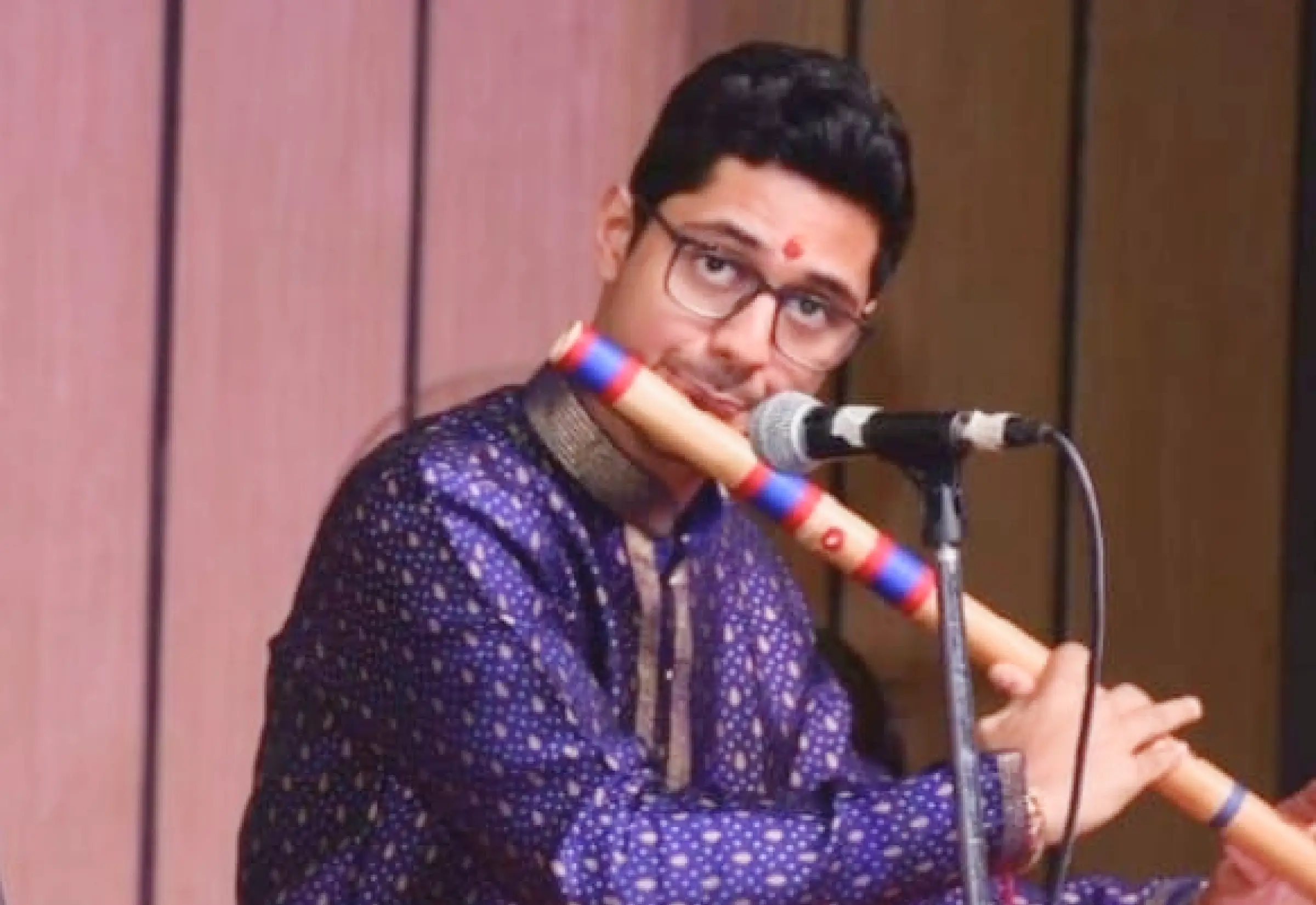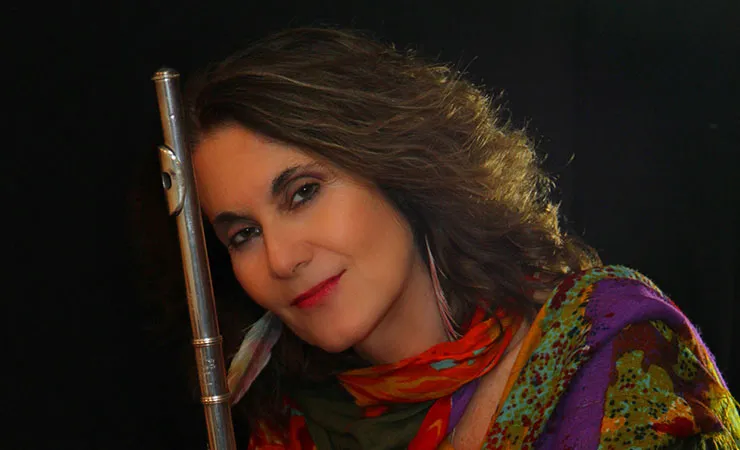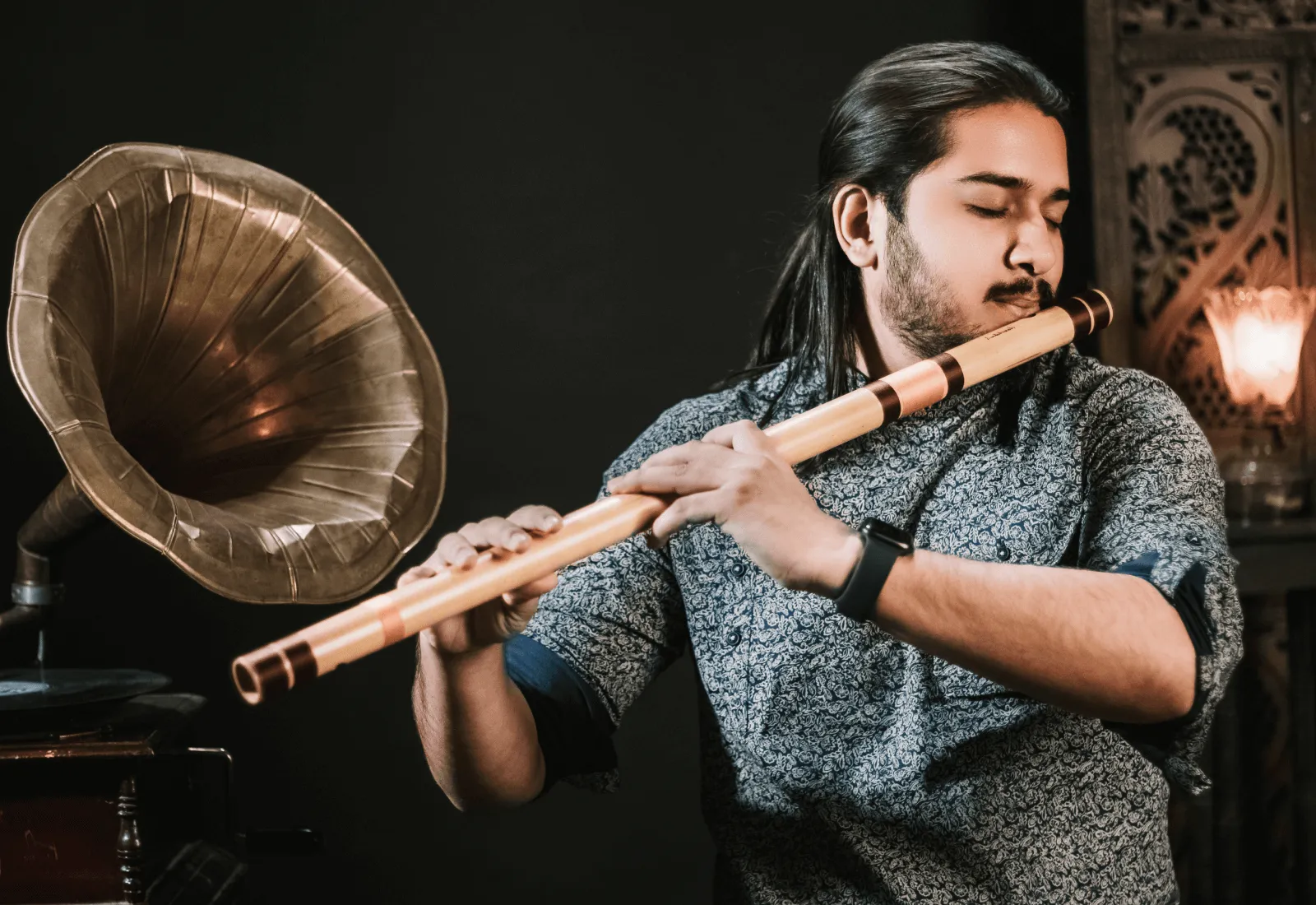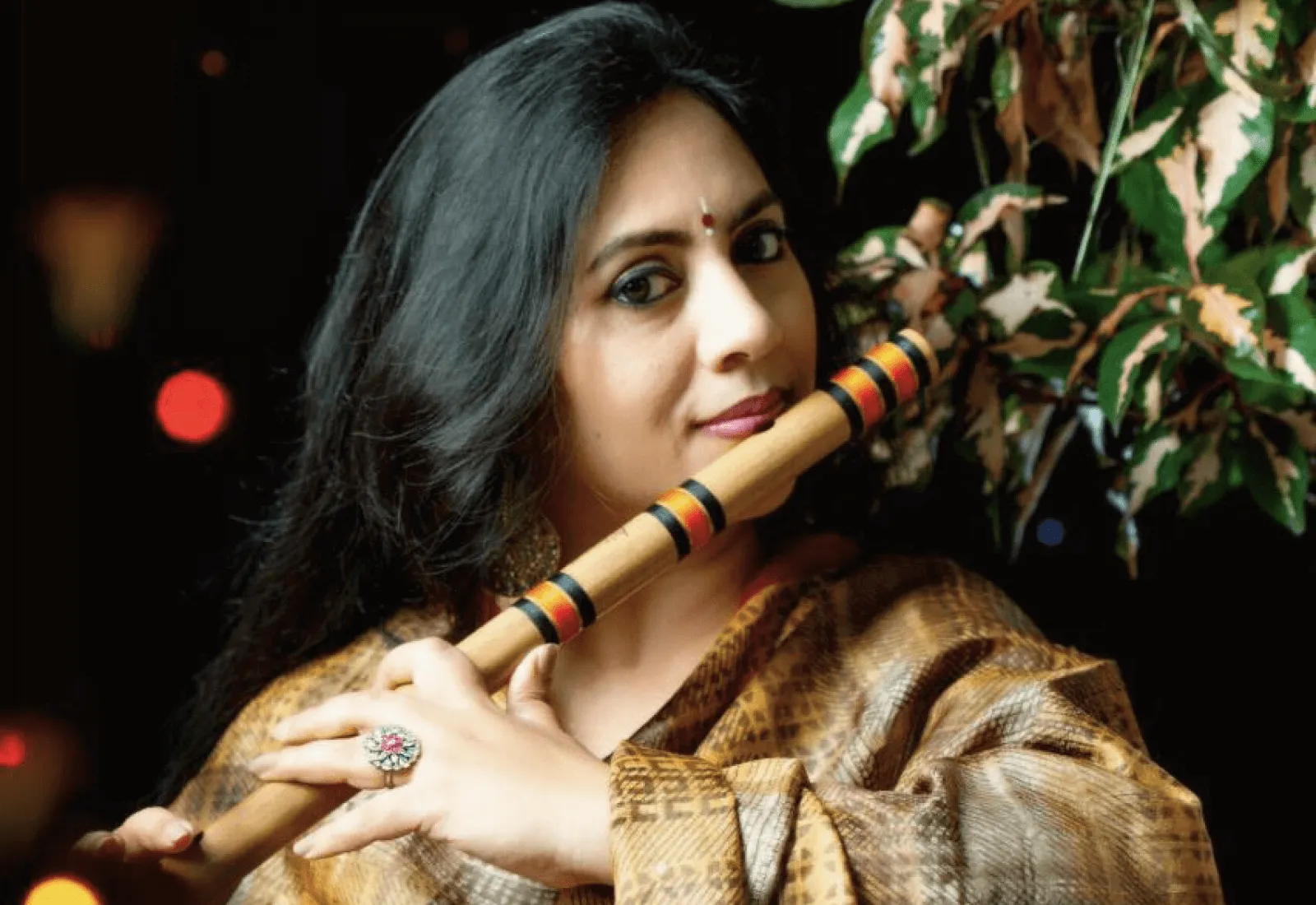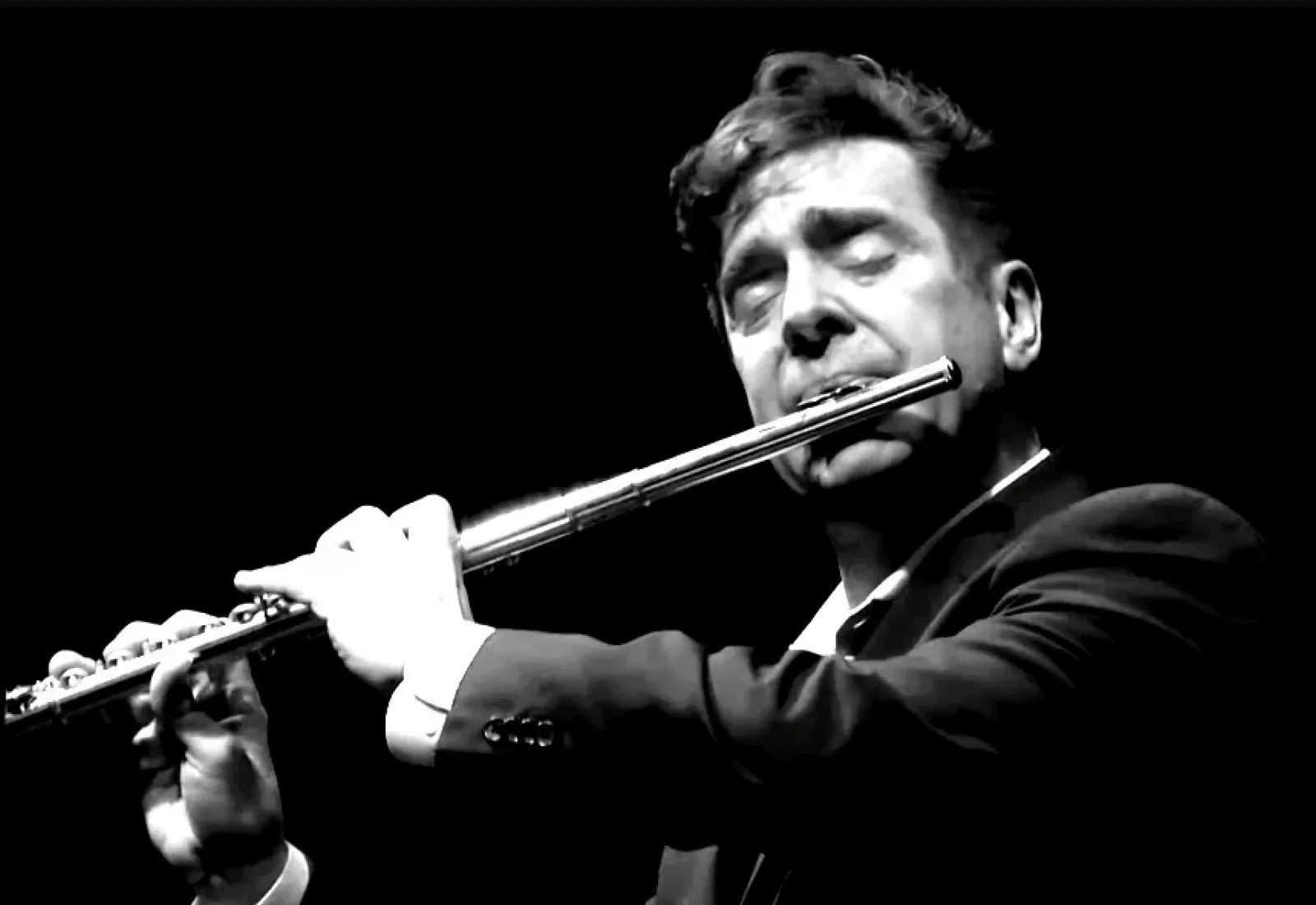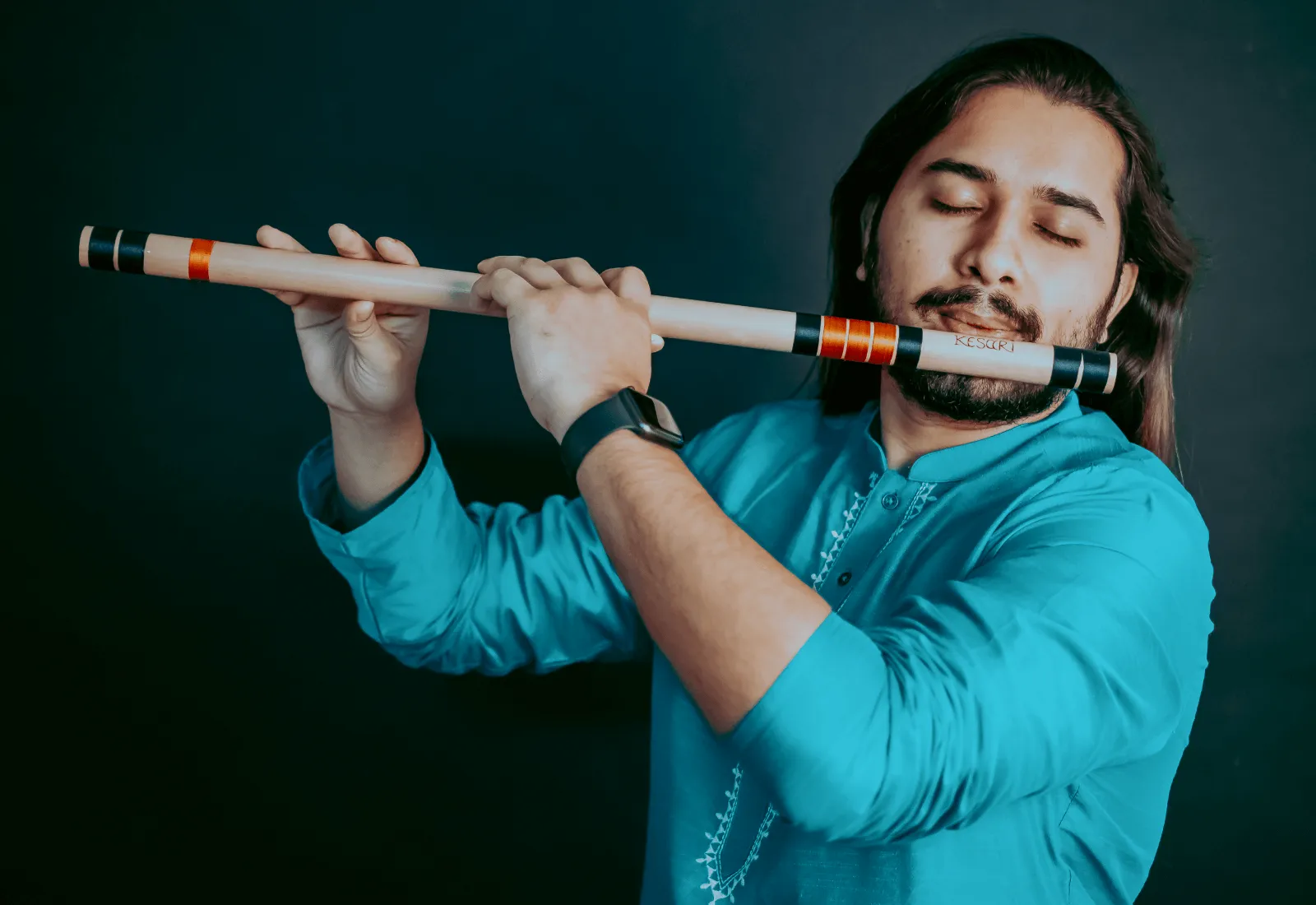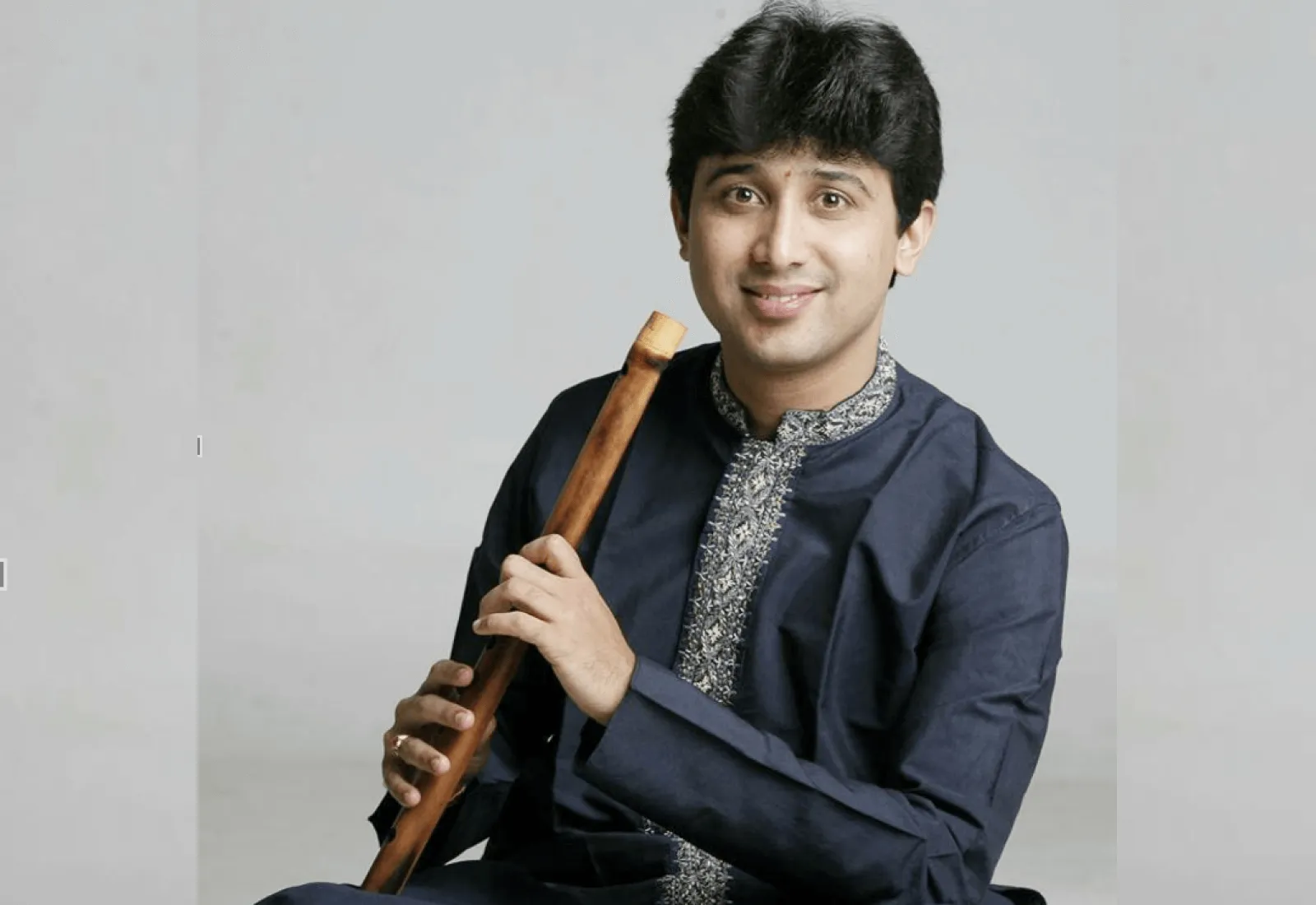Overview of Western Concert Flute
The western concert flute is a metal-bodied transverse flute - meaning it is held horizontally during play, as opposed to most other flutes that are played vertically. The body of the flute has larger vent holes placed precisely in acoustically optimal places along the shaft.
This version of the flute boasts an elaborate key-and-pad system that works to cover and uncover the holes along the body of the instrument instead of relying on the airtight seal of a finger to block the flow of air. These flutes are typically made of silver-plated brass, with the higher-end, completely silver flutes more popular among professional players, as they are believed to produce a more pleasing tone.
This style of flute is commonly used in military bands, marching bands, concert bands, wind and woodwind ensembles. It is also a very prominent solo and accompaniment instrument in the genres of jazz and blues. Although the western concert flute was designed for orchestral pieces, it has gained popularity all over the world in many different genres.
History of Western Concert Flute
The western concert flute came into existence in 1810 when German flautist and scientist Theobald Boehm developed the instrument. Boehm merged his own study of acoustics along with numerous creations and experiments by other creators of the previous 50 years to create the modern day concert flute.
By 1820 this version of the flute became widely used in Europe, especially in England. In 1822 a father and son duo named Nicholsons adjusted the placement of keys, created wider holes, and made the body of the instrument thinner.
Boehm reappeared in 1829, creating his own fingering system and a rod system that connected the keys. Boehm furthered his design by creating a machine for drilling holes, pillars, and posts. Boehm was widely renowned as he presented his instrument in performances in Paris and London.
In the 1840s, the two main flute makers, Boehm and the Nicholsons, came together to produce a clearer tone by switching to ring keys instead of open holes and creating a left thumb hand crutch to better finger action.
The following year this version of the flute became wildly popular with German and French flutists. Pushing their design even further, Boehm worked to give his flutes a new cylindrical bore and enlarged the embouchure to produce a fuller, larger tone. Then Boehm began experimenting with different metals, finally settling on silver, as it produces the best tone.
After a few additional keys were added by other musicians, Boehm finally perfected his ‘modern silver flute’ in 1878 and his final version was accepted as the model standard today. There are multiple flute makers all over the world but each instrument is made to these standards.
Types of Western Concert Flutes
The western concert flute family boasts a wide variety of instruments beginning with the piccolo - the highest pitched flute, playing a full octave above the concert flute. The piccolo is typically the highest-pitched instrument in bands and orchestras. Difficult to master, the piccolo has a reputation for being difficult to play in tune, partly due to its small size.
The treble flute plays in the key of G, a fifth above the concert flute, and is a rare instrument today. Treble flutes are typically found in choirs or private collections.
The soprano flute is pitched a minor third higher than the standard C flute and has a very distinctive sound. A few American choirs currently include a part for a soprano flute but other than these appearances, the soprano flute is rarely found.
Then there’s the concert flute. This flute is the standard and by far the most commonly played. It is pitched in C and has a range of over three octaves.
The alto flute is characterized by its mellow tone in the lower portion of its range. It is also considerably thicker and longer than the C flute, requiring much more breath from the flutist. The alto flute is pitched in the key of G, sounding nearly a fourth lower than it is written, and has a wide range. Also setting the Alto apart is the head joint that may be either straight or curved.
The bass flute is in the key of C as well, and one octave below the concert flute. Typically made with a curved head joint, this instrument usually ranges in length around 146 cm or 57 in. The bass flute is usually only in flute choirs as it is easily drowned out by instruments that play in a similar register, such as the clarinet.
The lowest-pitched instrument in the family of western flutes is the contra-alto. An octave below the alto flute, it has a large body held vertically that rests on the floor.
Mechanics of Western Concert Flute
Concert flutes consist of three different parts, each of which affect tuning: head joint, body, and foot joint. The head joint is sealed by a cork and it's possible to adjust the tuning of the instrument by changing the head joint, although most flutists keep the factory-recommended adjustments at around 17 mm from the center of the embouchure hole for the best scale. The head joint also consists of the crown, embouchure hole, and lip plate.
The body of the flute consists of the open-hole keys, the in-line G key and the barrel that connects it to the head joint. The body section slides into the head and foot joints and can be adjusted to tune to the key of the instrument. These adjustments alter the length of the instrument minutely.
The foot joint of a flute consists of the gizmo key which is an optional B foot joint that helps to play the C7 note. Flutes come with a wide variety of optional customizations depending on the style of music the flutist wishes to play. Some of these optional customizations are a split E key, trill keys, D sharp roller key, and soldered tone holes.
Western Concert Flute Playing Techniques
The flute is an agile instrument that allows staccato and legato at the fastest tempo. It is ideally suited for quick arpeggios and chromatic diatonic scales, leaps, or trills. In order to master all this instrument has to offer, one should be well versed in the multiple playing techniques available to them. Some of the techniques available are as follows:
Single-tonguing: A technique whereby the player articulates each syllable by moving only the tongue, while keeping the lips and cheeks immobile.
Vibrato: Produced by manipulating the tone or volume with the diaphram, larynx and/or lips.
Sforzato: A forced, short attack followed by a rapid reduction of tone intensity.
Double-tonguing: A method whereby the player articulates the syllables of each note by stopping the breath that plays the instrument with the tip of their tongue.
Triple-tonguing: The player articulates the syllables te-ke-te or something similar to produce an effect like double-tonguing.
Flutter-tonguing: By articulating a rolled R, which produces a rapid tremolo. This method is better suited for quiet and soft passages since the volume is lower.
Trills: The flute is especially suited for this technique. Every minor and major trill from D4 to B6 may be played easily. Lower trills are more difficult, being played with the smaller finger.
Glissando: While not a typical playing technique of the flute because the keys are not well suited for sliding transitions, they may be performed smoothly on the open flute by uncovering the tone holes.
Multiphonics: A technique that allows two or more notes to be played simultaneously.
Pitch bending: A technique mastered by turning the flute towards or away from the flutist to ‘bend’ the note.
Notable Western Concert Flute Players
Famous flute players can be found all over the world and in a variety of genres. Some of the most notable are:
- Claudi Arimany
- Emily Beynon
- Emmanuel Pahud
- Hubert Laws
- Ian Anderson
- Jasmine Choi
- Jeanne Baxtresser
- Julius Baker
- Michel Debost
- Nestor Torres
- Paula Robison
- Viviana Guzman


